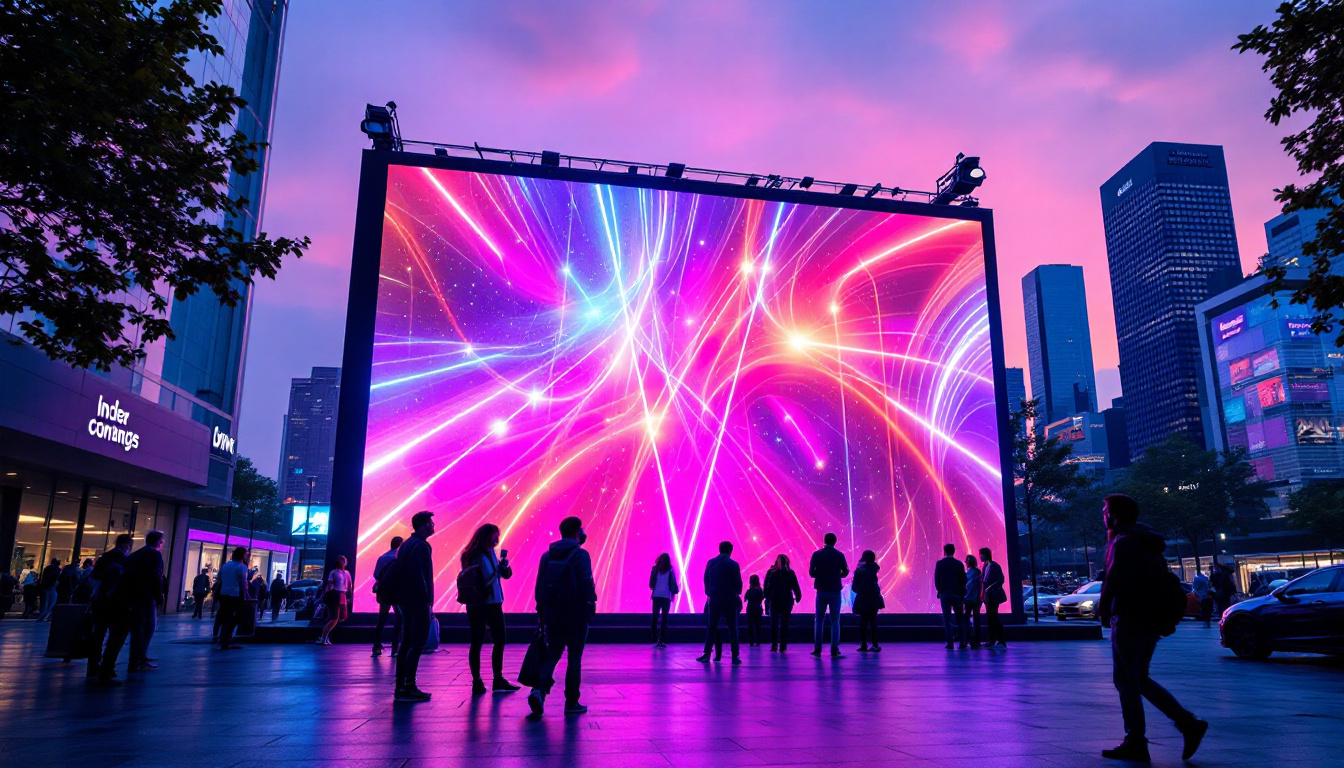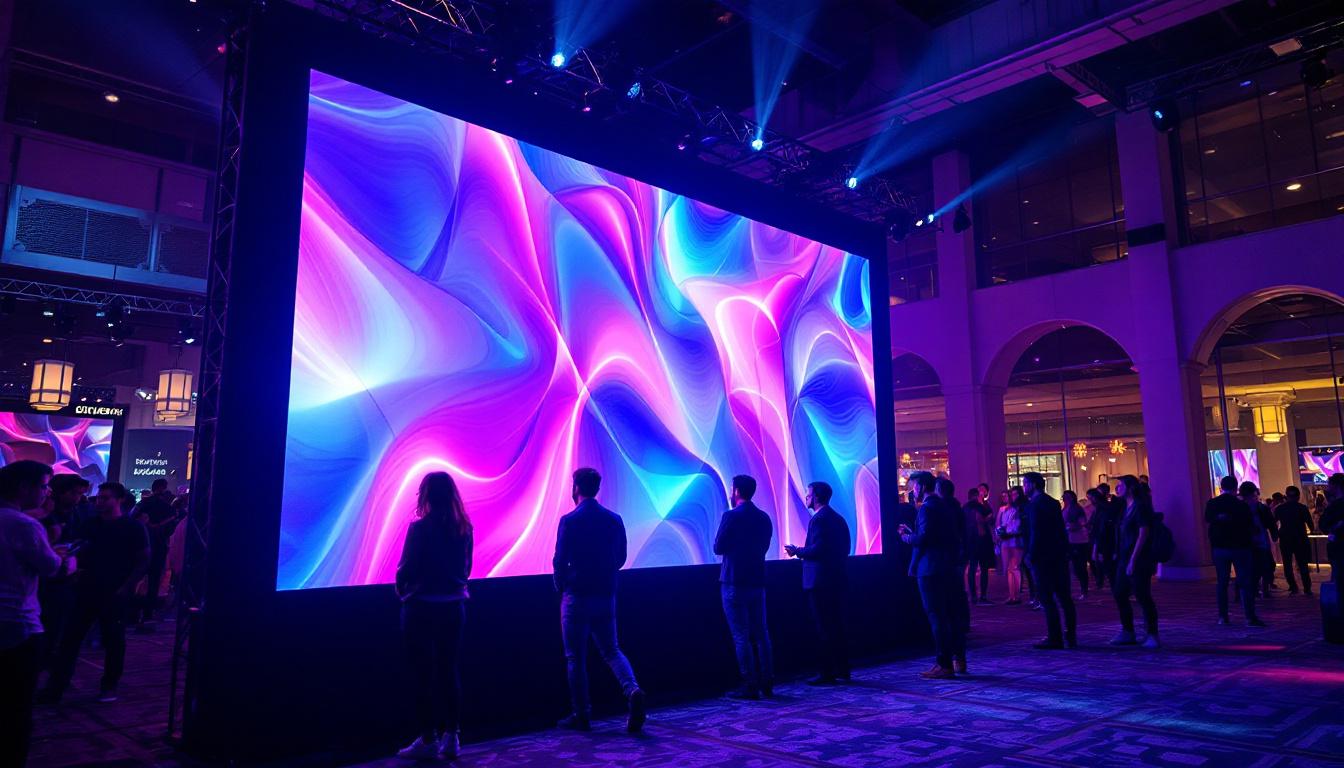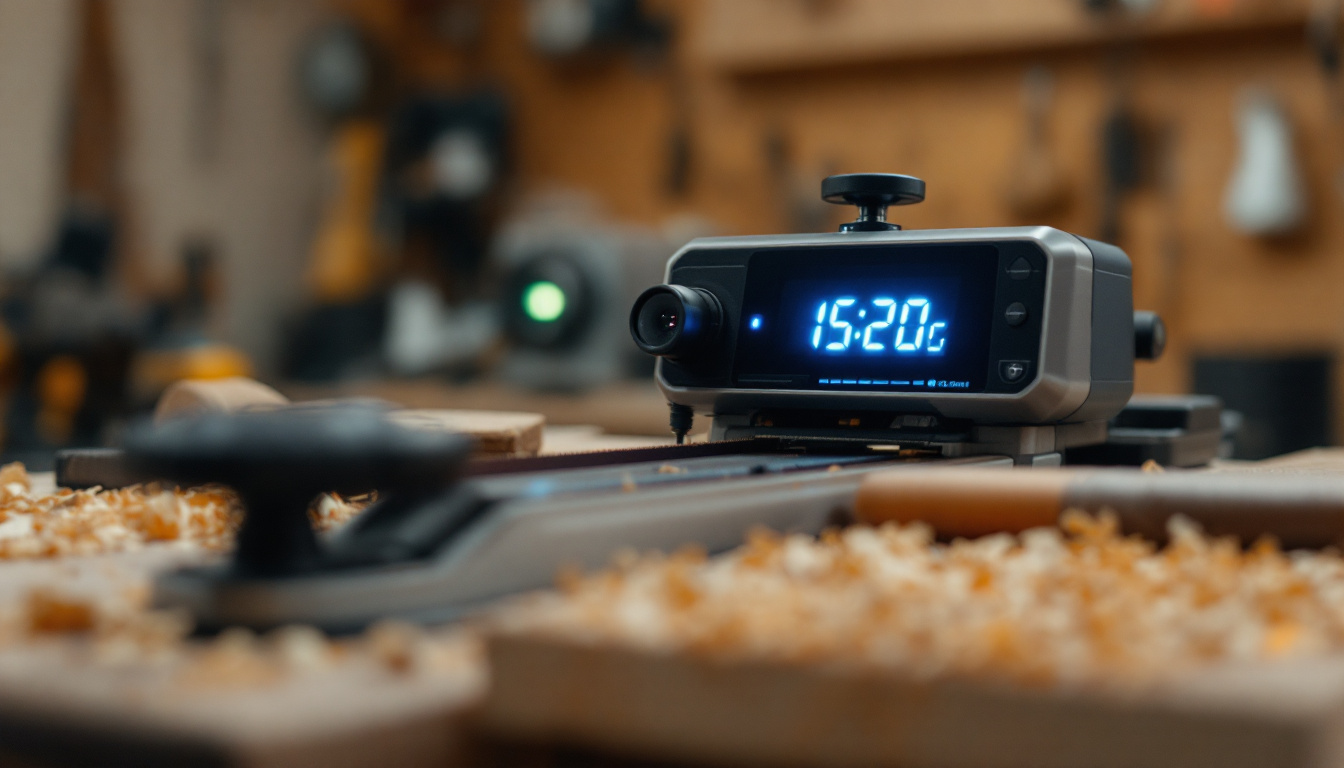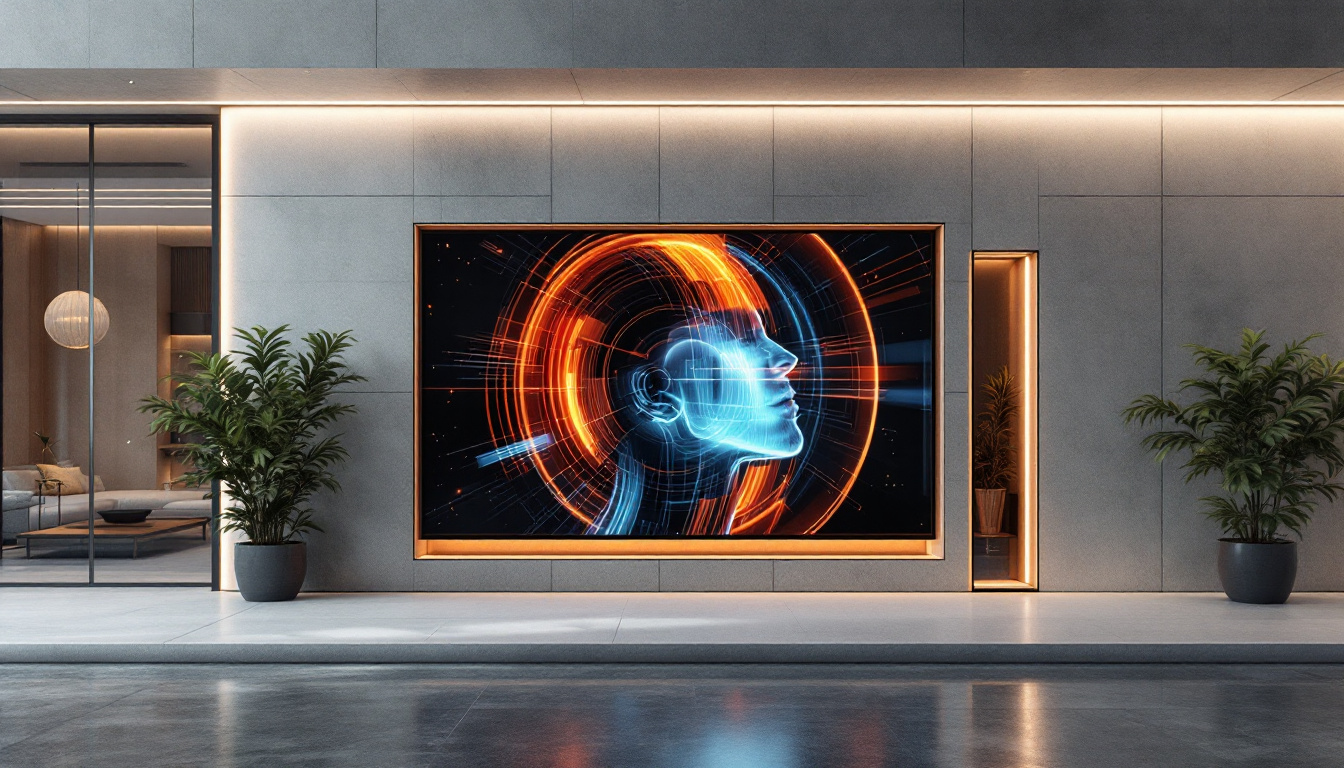Perfect pitch, also known as absolute pitch, is a fascinating phenomenon that has intrigued musicians, scientists, and educators alike. It refers to the ability to identify or recreate a given musical note without any reference tone. While some individuals seem to be born with this extraordinary skill, the question remains: is perfect pitch a learned ability or an innate gift? This article will explore the concept of perfect pitch, its relationship with learning, and how it can be visually represented through LED displays.
Understanding Perfect Pitch
Perfect pitch is often considered a rare talent, found in only a small percentage of the population. Individuals with perfect pitch can accurately identify notes played on an instrument or sung by a person. This ability extends beyond mere recognition; it also includes the capacity to produce a specific note on demand. For musicians, this skill can be invaluable, allowing for seamless improvisation and composition. The phenomenon of perfect pitch, also known as absolute pitch, has intrigued musicians and scientists alike, leading to various studies aimed at uncovering its mysteries. Those with perfect pitch often report a heightened sensitivity to musical nuances, enabling them to discern subtle differences in tone and timbre that others might overlook.
Characteristics of Perfect Pitch
Those who possess perfect pitch exhibit several distinct characteristics. Firstly, they can name notes played in isolation, whether on a piano, guitar, or any other instrument. Secondly, they can sing a specific note without needing to hear it first. This ability often manifests in early childhood, with many individuals reporting that they recognized notes before they even began formal music education. Interestingly, some studies have shown that perfect pitch is more prevalent among individuals who began musical training at a very young age, suggesting a critical period for developing this skill. Additionally, many individuals with perfect pitch can also identify the key of a piece of music just by listening, which can greatly enhance their overall musical experience.
Types of Pitch Recognition
There are two primary types of pitch recognition: perfect pitch and relative pitch. While perfect pitch involves identifying a note without any reference, relative pitch allows individuals to determine the interval between two notes. Most musicians develop relative pitch through training and experience, enabling them to play by ear or transcribe music. Understanding the differences between these two types of pitch recognition is crucial in exploring the learning aspects of perfect pitch. Relative pitch is often seen as a more practical skill for musicians, as it allows for the interpretation of music in various keys and contexts. In contrast, perfect pitch can sometimes be a double-edged sword; while it provides certain advantages, it may also lead to challenges when encountering music that is transposed or altered from its original key.
The Debate: Nature vs. Nurture
The ongoing debate about whether perfect pitch is innate or learned has led to extensive research. Some studies suggest that genetic factors may play a role, while others indicate that early musical exposure can significantly influence the development of this ability. The question remains complex, as both nature and nurture appear to contribute to the phenomenon of perfect pitch. Furthermore, cultural factors may also play a significant role; for example, in cultures where music education is emphasized from a young age, the incidence of perfect pitch may be higher. This has led researchers to explore how different musical environments and educational approaches can impact the development of pitch recognition skills, ultimately enriching our understanding of musical cognition and talent.
The Role of Early Musical Training
Research has shown that early exposure to music can enhance the likelihood of developing perfect pitch. Children who begin musical training at a young age, particularly before the age of six, are more likely to acquire this skill. This correlation raises important questions about the role of structured musical education in fostering perfect pitch. Moreover, the benefits of early musical training extend beyond pitch recognition; they can also improve cognitive functions such as memory, attention, and even language skills. Engaging with music at a young age can create a rich auditory environment that stimulates brain development, making it a vital component of early childhood education.
Critical Period Hypothesis
The critical period hypothesis suggests that there are specific windows in early development when the brain is particularly receptive to certain types of learning. In the context of music, this means that children who engage with musical training during these formative years may have a greater chance of developing perfect pitch. This theory has led to increased interest in early childhood music programs and their potential benefits. For instance, many educational institutions are now incorporating music classes into their curricula, recognizing that these programs can enhance not only musical skills but also overall academic performance. The integration of music into early education can foster creativity and emotional expression, which are essential for holistic development.
Case Studies of Perfect Pitch
Several notable musicians have been documented as having perfect pitch, providing insight into how this ability can manifest in different individuals. For instance, classical composers like Mozart were known for their extraordinary musical abilities from a young age. These case studies often highlight the combination of innate talent and rigorous training, suggesting that while some may have a natural inclination toward perfect pitch, structured learning plays a significant role in its development. Additionally, contemporary musicians such as Mariah Carey and Stevie Wonder have also been cited as examples of individuals with perfect pitch, showcasing that this ability can be found across various genres and styles of music. Their experiences often reveal the importance of mentorship and exposure to diverse musical influences, further emphasizing the multifaceted nature of musical training and its impact on developing perfect pitch.
Learning Perfect Pitch
While perfect pitch may seem unattainable for many, recent studies indicate that it is possible to develop this skill through targeted training. Various methods and techniques have emerged, allowing individuals to enhance their pitch recognition abilities. Interestingly, perfect pitch, also known as absolute pitch, is the ability to identify or recreate a given musical note without any reference tone, a skill that can significantly enhance a musician’s versatility and creativity.
Training Techniques
Several training techniques can be employed to develop perfect pitch. One common method involves the use of apps and software designed to help users identify notes through repeated exposure and practice. These tools often incorporate gamification elements, making the learning process engaging and interactive. In addition to digital tools, traditional methods such as ear training classes and one-on-one instruction with a music teacher can provide personalized feedback and guidance, which can be invaluable for learners at any level.
Listening Exercises
Listening exercises are another effective way to improve pitch recognition. By actively listening to music and identifying notes, individuals can train their ears to recognize specific pitches. This practice can be enhanced by using a piano or other instrument to reinforce the connection between the auditory and visual aspects of music. Furthermore, incorporating a variety of musical genres and styles into listening sessions can broaden one’s exposure to different tonalities and harmonies, making the training more comprehensive. Engaging with live performances, whether by attending concerts or participating in jam sessions, can also provide real-time pitch recognition challenges that further develop this skill.
Technological Advancements in Pitch Training
The advent of technology has transformed the way musicians learn and practice. With the rise of digital tools, aspiring musicians can access a wealth of resources to aid in their pursuit of perfect pitch. LED displays, in particular, have emerged as a powerful tool in this context.
LED Displays in Music Education
LED displays can be utilized in various ways to enhance music education. For instance, they can visually represent notes, allowing students to see the pitch as they hear it. This visual reinforcement can help bridge the gap between auditory perception and musical notation, making it easier for learners to grasp the concept of pitch.
Interactive Learning Environments
Incorporating LED displays into interactive learning environments can create a more engaging experience for students. For example, music classrooms equipped with LED screens can showcase real-time visualizations of notes being played, enabling learners to connect sound with sight. This multisensory approach can enhance understanding and retention, ultimately supporting the development of perfect pitch.
Challenges in Developing Perfect Pitch
Despite the potential for learning perfect pitch, several challenges can hinder progress. Understanding these obstacles is essential for both educators and learners.
Psychological Barriers
Psychological barriers can significantly impact an individual’s ability to develop perfect pitch. Fear of failure, anxiety, and self-doubt can create mental blocks that prevent effective learning. Encouraging a positive mindset and fostering a supportive learning environment can help mitigate these challenges.
Individual Differences
Every individual has a unique learning style, and what works for one person may not be effective for another. Some may find auditory training more beneficial, while others may thrive in visual or kinesthetic learning environments. Recognizing these individual differences is crucial for tailoring training methods to suit each learner’s needs.
Conclusion: The Future of Perfect Pitch Learning
As research continues to explore the complexities of perfect pitch, the potential for developing this skill through targeted training becomes increasingly evident. The integration of technology, particularly through the use of LED displays, offers exciting possibilities for enhancing music education.
While perfect pitch may not be attainable for everyone, the journey toward improving pitch recognition can lead to significant benefits for musicians of all levels. By understanding the interplay between innate ability and learned skills, educators can better support their students in achieving their musical goals.
Ultimately, the pursuit of perfect pitch is not just about the destination; it is about the joy of music and the lifelong journey of learning. Whether through traditional methods or innovative technological approaches, the exploration of perfect pitch will continue to inspire musicians and educators alike.
Enhance Your Musical Journey with LumenMatrix
Embark on an immersive learning experience with LumenMatrix, where our advanced LED display technology brings your musical education to life. Whether you’re striving to develop perfect pitch or seeking innovative ways to engage with music, our diverse range of LED display solutions, from Indoor and Outdoor LED Walls to Custom and All-in-One LED Displays, is designed to support your goals. Elevate your practice sessions, performances, and classrooms with captivating visuals that resonate with every note. Check out LumenMatrix LED Display Solutions today and transform the way you perceive and interact with music.































